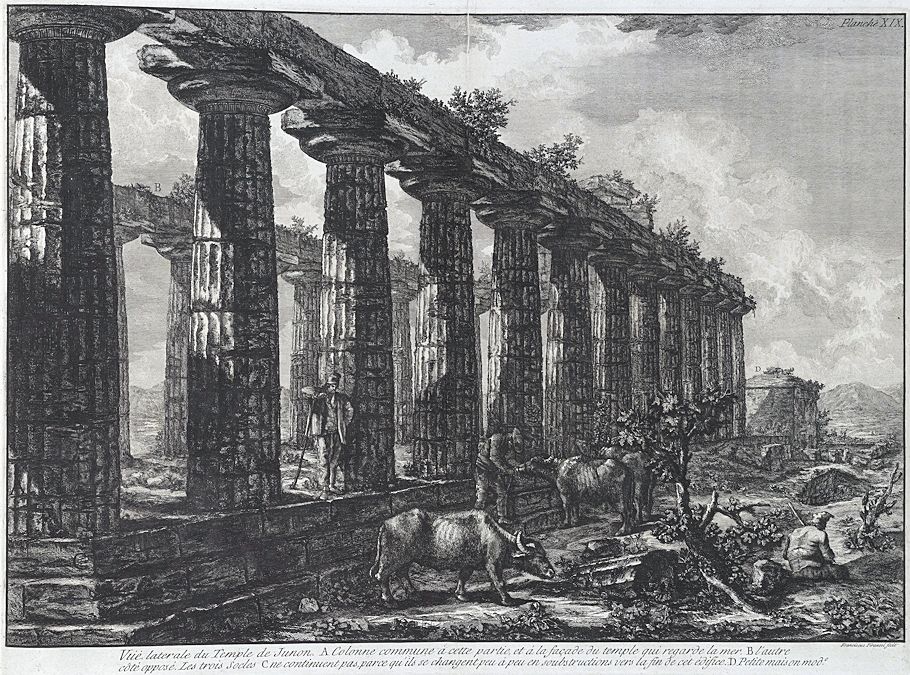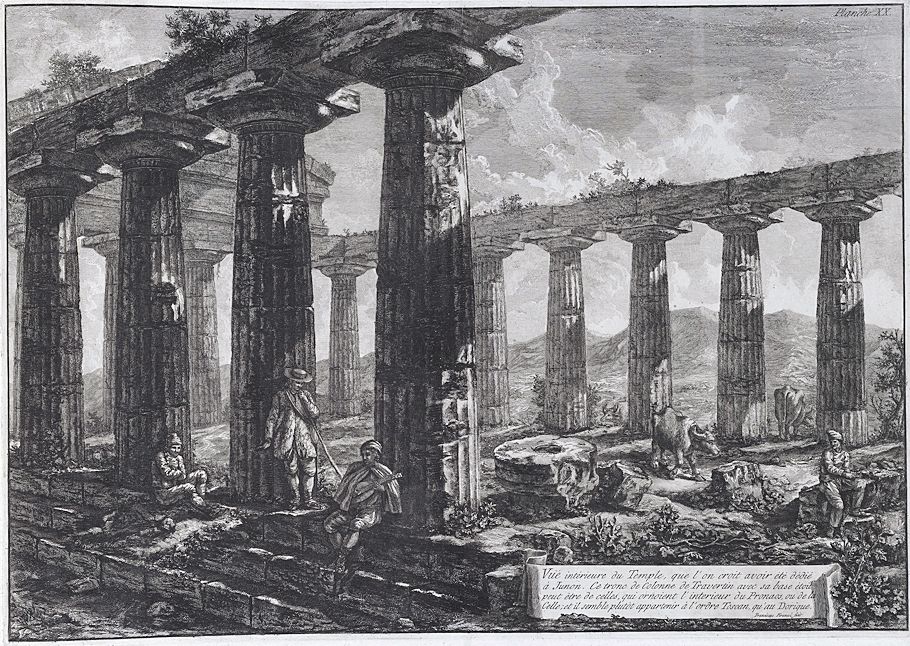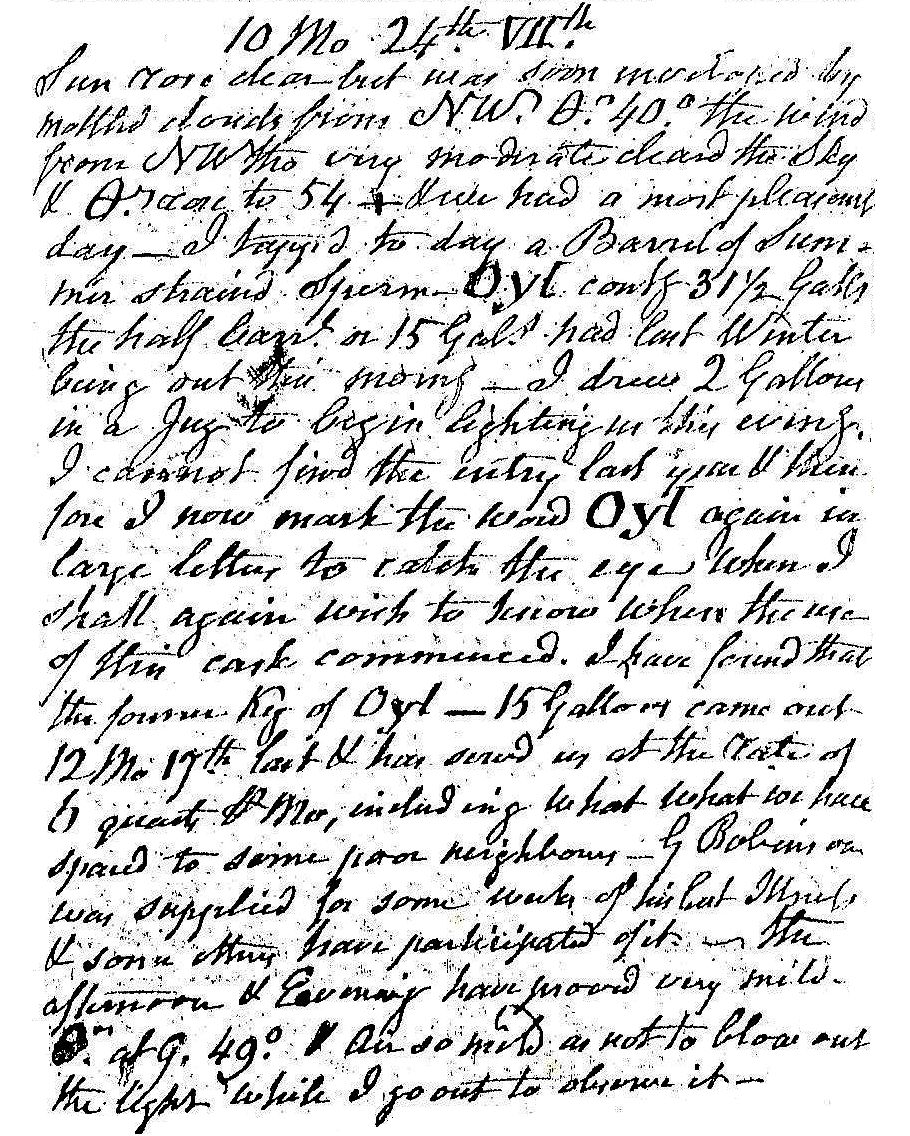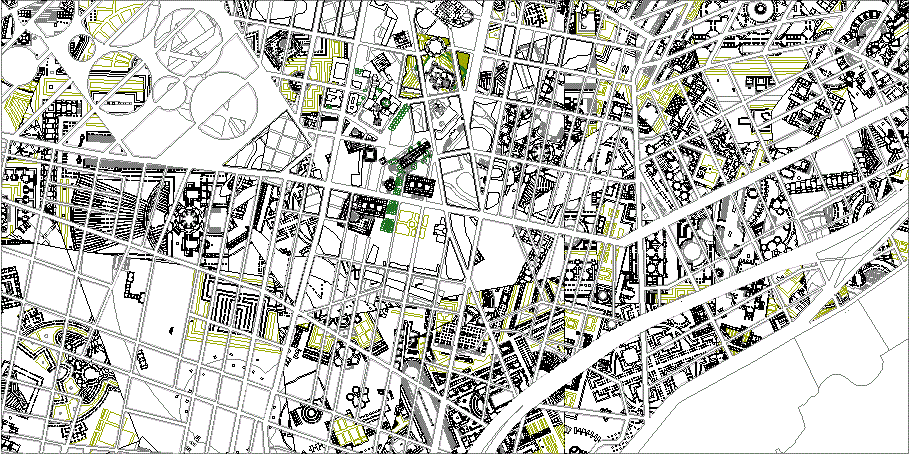24 October 1778 Saturday


Jean-Baptiste-Louis-George Seroux d'Agincourt leaves Paris, never to see it again.
24 October 1812 Saturday

Sun rose clear but was soon moderated by mottled clouds from NW. ... I ...... today a barrel of summer strained sperm oil .... 31 1/2 gallons the half barrel or 15 gallons had last winter being out this morning. I drew 2 gallons on a jug to begin lighting us this evening. I cannot find the entry last year and therefore I mark the words Oyl again in large letters to catch the eye when I shall again wish to know when the use of this cask commenced. I have found that the former keg of oil--15 gallons came out December 17th last and has served us at the rate of 6 quarts per month including what we have spared to some poor neighbors. G Robinson was supplied for some weeks of his last ....... and some ..... have participated of it. This afternoon and evening have proved very mild. ... Air so mild as not to blow out the lights while I go out to observe it.
24 October 2000
brown (lauf 2)
I too am working on a "theory" of architecture (style) that relates architecture to a "process" larger than architecture itself, that is, the notions that 1) human imaginations reenact corporal morphology and physiology, and 2) architecture (style) reenacts human imaginations. The main theory is called chronosomatics (meaning literally time + the body), and the primary text on chronosomatics is entitled The Timepiece of Humanity.
You ask: "What has 'metabolic process' have to do with it?" The metabolic process within humanity, and, more or less in all (animal?) life, is a creative-destructive duality wherein the corporal destruction of matter releases energy thus providing creative impetus. I theorize that the metabolic process is (just) one of the human physiologies reflected in human imagination, and, subsequently, the metabolic process becomes reflected in human activities and events. (Note: the other corporal physiologies like fertility, assimilation, osmosis, etc. also play key roles within human imagination, but the theory of chronosomatics suggests the metabolic process as being one particularly dominant in our times.)
24 October 2001
ideas, etc.
Philadelphia and Rome as the capitals of reenactment.
"The Crossed Architecture of Piranesi"
Acropolis Q at the steps leading up to the Garden of Satire.
Ichnographia Quondam is the large plan of a virtual museum of architecture.
24 October 2003
Jesus struck by lightening
It might be of interest to compare the present lightening strike story with the lightening strike(s) that (reportedly and/or supposedly) ended the rebuilding of the Jewish Temple at Jerusalem circa 360 AD during the reign of Julian the Apostate.
Jesus struck by lightening
And on the rebuilding of the Temple, the occurrence of earthquakes also (supposedly) kept the workmen away from the site. Christian zealotry or not, the rebuilding work ceased, and to this day the Temple remains destroyed.
Christian zealotry during the mid fourth century was indeed fierce, and there is at least one documentation of Christian terrorism against a Jewish synagogue during the reign of Theodosius (late 4th cent.). Bear in mind, however, that the Christian mission of the period was much more focused on destroying paganism, a mission, moreover, that is still exercised today. It is the pagan temples of the world that Christianity really obliterated.
24 October 2017

GAUA IQ24 plans fixed
24 October 2022 Monday
Francesco and his career as a realistic example of "the first moderns."
Miers Fisher is 28 years younger than Piranesi and 10 years older than Francesco. Piranesi was thus 38 years old when Francesco was born. And only Miers Fisher lived to have an authentic and comfortable retirement, though not without its own times of real grief.
From September 1777 to April 1778, 29 year old Miers Fisher was among the Exiles in Virginia, a true Quaker, today you would say a conscientious objector to the American War of Independence.
But, back to the "first moderns," like Francesco, several of Miers Fisher's children were examples of the "first moderns." Miers Fisher Jr. was one of the first American citizens to establish trade relations with Imperial Russia, 1808-1813. In 1812, the younger Redwood Fisher returned to Philadelphia from being a super-cargo in the East Indies. Revolution was beginning to change the world, and these young men of very secular means were among the first modern operators in a newly revolutionized world.
In terms of real appreciation, that the discovery of Piranesi's final project continually takes me to "unknown" places which the story itself, in turn, eventually make clearly imaginable, pleases me the most.
|